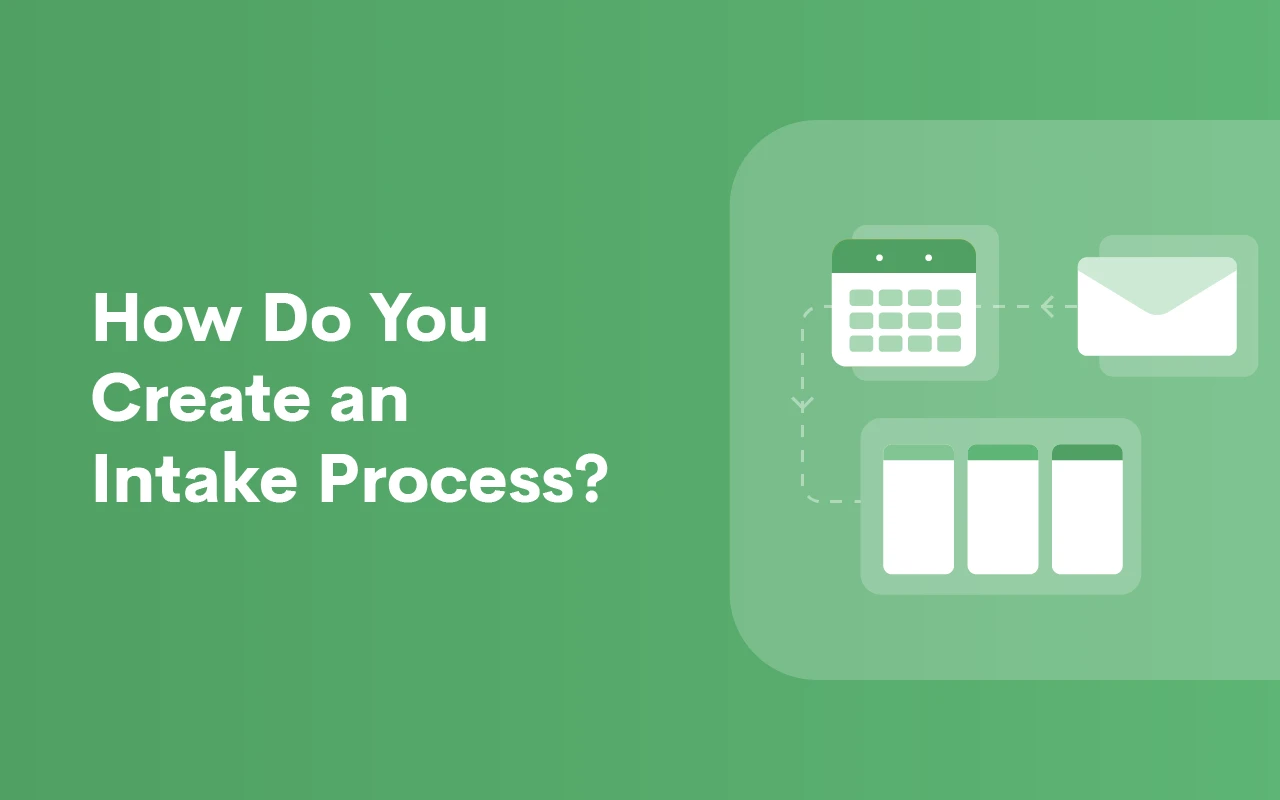How Do You Create an Intake Process?

Creating an effective intake process for a law firm is crucial for efficiently managing client inquiries, ensuring that relevant information is gathered, and setting the stage for successful client representation. Legal client intake automation and the use of an intake process template can streamline the process by leveraging technology to automate repetitive tasks, reduce manual effort, and improve efficiency in managing client inquiries and information.
What is the Intake Process for a Law Firm?
A law firm’s most common intake process definition: the procedure used to manage and respond to inquiries and requests for legal services from potential clients. The intake process serves as the initial point of contact between the law firm and potential clients, laying the foundation for establishing a professional relationship.
What are the phases of the intake process?
The intake process involves several phases, including:
- Responding to client inquiries
- Gathering client details
- Conducting conflict checks
- Assessing the merits of the case
- Scheduling consultations
- Meeting with clients
- Beginning representation
A well-defined and executed intake process is essential for managing client inquiries, facilitating the delivery of legal services, and enhancing the success and reputation of the law firm.
How do you create an intake process?
Inquiries from potential clients must be managed efficiently so that firms retain new clients and individuals obtain legal representation. Here’s a guide on how to create an effective intake process:
- Define goals and objectives: An intake process should aim to efficiently capture client information, evaluate the potential cases, and initiate the client engagement process.
- Identify critical information: Determine what information is essential for evaluating potential cases and initiating client representation, including:
- Basic contact information (name, phone number, address, email)
- Details of the legal issue
- Relevant documents or evidence
- Design forms: Create physical or digital intake forms or questionnaires that are user-friendly, easy to understand, and capture the required information.
- Establish intake channels: Determine how clients can submit their intake information. This could be through:
- Phone calls
- Email submissions
- Online intake forms on the firm's website
- In-person meeting at the firm's office
- Automate where possible: Maximize technology to streamline the intake process and reduce manual effort by utilizing:
- Online intake forms with automated data capture
- Customer relationship management (CRM) software
- Automated responses to acknowledge receipt of inquiries
- Follow-up: Develop procedures for following up with clients after the initial intake, including confirming receipt of their inquiry, providing timelines, and scheduling consultations with attorneys.
Regularly review and evaluate your intake process to identify areas for improvement. Get feedback from clients and staff to find out what's working well and what can be upgraded.
What does the intake process include?
Typically, a law firm completes a number of intake process steps when onboarding new clients, such as:
- Initial contact: The potential client makes contact with the law firm, either through a phone call, email, website form submission, or in-person visit.
- Gather information: The intake staff or attorney collects essential information from the potential client that is recorded manually or through an intake process template.
- Conflict check: The law firm conducts a conflict check to ensure there are no conflicts of interest that would prevent them from representing the potential client.
- Evaluate issue: An initial assessment of the potential client's legal issue is conducted to determine whether the firm has the expertise and resources to assist.
- Schedule appointment: If the law firm determines that they can assist the potential client, an appointment is scheduled for further consultation or evaluation via a phone consultation, video conference, or an in-person meeting at the firm's office.
- Confirmation and follow-Up: The law firm confirms the appointment details with the potential client and provides any necessary instructions or documents for the consultation.
- Consultation: During the scheduled appointment, the attorney conducts a more in-depth consultation or evaluation of the potential client's legal issue.
- Secure the client: Based on the consultation, both the potential client and the attorney decide whether to proceed with formal representation. If both parties agree to move forward, the attorney-client relationship is established, and the representation begins.
- Engagement letter: The law firm prepares and presents an engagement letter or retainer agreement outlining the terms of representation. The potential client reviews and signs the agreement to formalize the relationship.
By following these steps, law firms can effectively manage inquiries from potential clients, evaluate legal issues, and initiate client representation in a systematic and efficient manner.
What is an example of an intake process?
Some examples of an intake process include sending confirmation emails to new clients, assigning and moving tasks into a team member’s workflow, and prioritizing tasks based upon deadlines. Lawmatics legal intake software makes it easy to create your own client intake process, efficiently capture client information with a client intake form template, and keep everyone at the firm on the same page.
Are you ready to take the stress out of client intake? Sign up for a Lawmatics product demo today.


